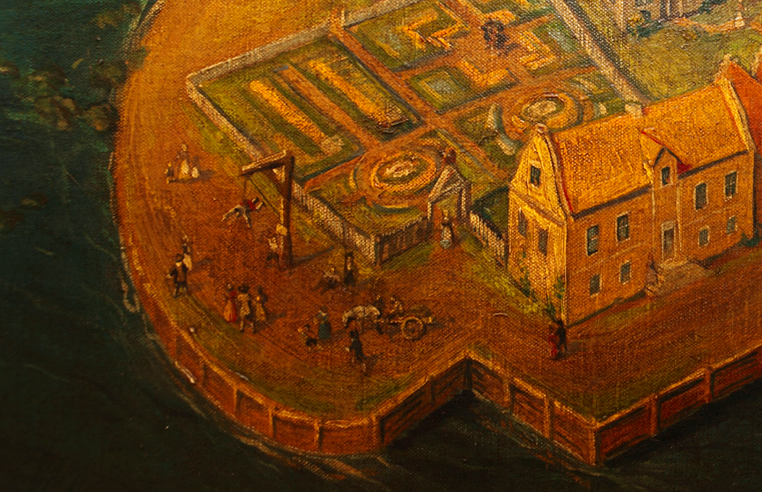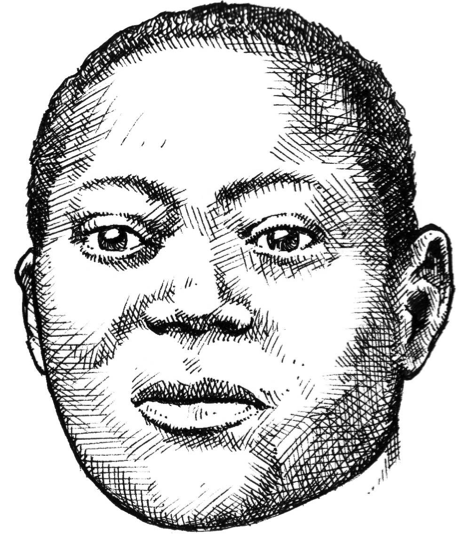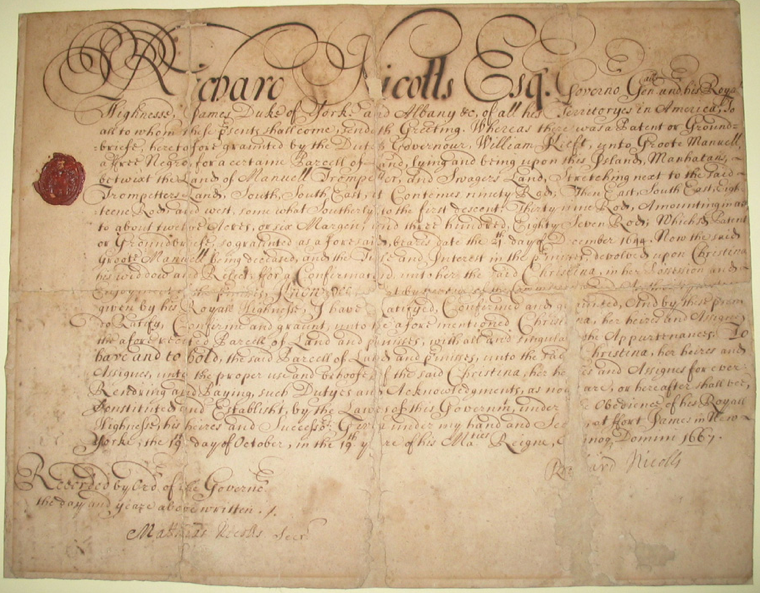Manuel de Gerrit de Reus
From Slavery To Freedom
 Detail from a painting by Stossel, depicting the artist’s interpretation of how the gallows might have been used. No written evidence exists of this particular punishment. This painting is a Gift of Janet Schaefer to the Southstreet Seaport Museum. Photographs of the painting are courtesy of the South Street Seaport Museum , New York , New York. The painting is by Heinrich (Henry) Stossel, 1860.
For more information on the Southstreet Seaport Museum please visit their website .
Detail from a painting by Stossel, depicting the artist’s interpretation of how the gallows might have been used. No written evidence exists of this particular punishment. This painting is a Gift of Janet Schaefer to the Southstreet Seaport Museum. Photographs of the painting are courtesy of the South Street Seaport Museum , New York , New York. The painting is by Heinrich (Henry) Stossel, 1860.
For more information on the Southstreet Seaport Museum please visit their website .
On a cold day in January of 1641, Manuel de Gerrit de Reus climbed a ladder to be executed for murder. Although one of nine slaves who confessed to the murder, Manuel was chosen by the drawing of lots to pay the ultimate penalty for the crime. Before him stood New Amsterdam’s population, ready to bear witness to the local court’s ruling. Two ropes were secured around his neck to compensate for his great size and weight. The executioner pushed Manuel from the ladder…
Manuel survived that day and lived a long life on Manhattan. He was among the first enslaved people brought to New Amsterdam by the Dutch West India Company in 1626, probably captured from a Spanish or Portuguese vessel. With few laborers available, Company officials turned to slaves to help clear land, farm and build fortifications. Like many other slaves, Manuel held certain rights in New Amsterdam, yet he was still property of the Company.
Three years after he survived his execution and was freed by the court, Manuel and several other company slaves were granted what has sometimes been referred to as “half freedom” (but was actually a “group emancipation” of eleven men and their wives) by the Director and Council. Within a year, they were granted plots of land for farming and housing, outside of the city wall and north of the Fresh Water Pond.
In the next twenty years, they would be joined by almost twenty other former slaves creating the first racially segregated but free Black community in Manhattan. Captured as a sailor, enslaved to the company, Manuel ended his life as a free man, farming much of what is now Washington Square Park.
Learn More
The NAHC has a wealth of information about Manuel de Gerrit de Reus and the context in which he lived in New Amsterdam. Some examples include:
- 17th Century Image suggesting the importance of slavery in the development of New Amsterdam.
- Hear Manuel Talk about his story

- Example 7th Grade Curriculum based around the story of Manuel de Gerrit de Reus’ life.


